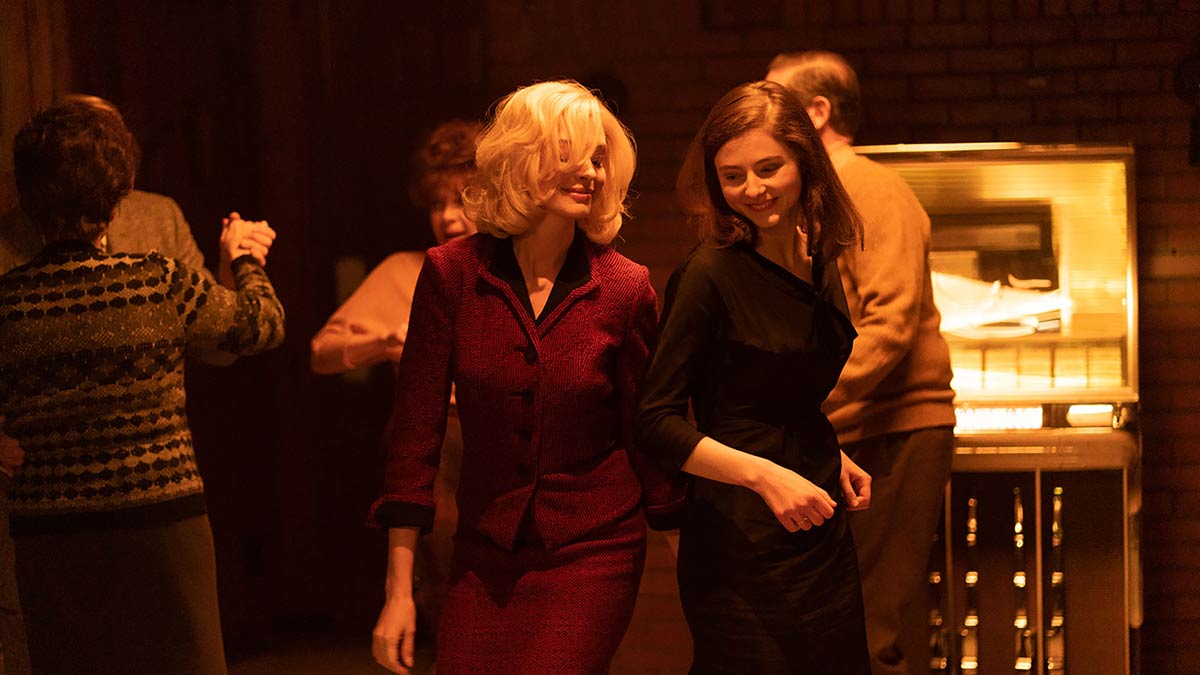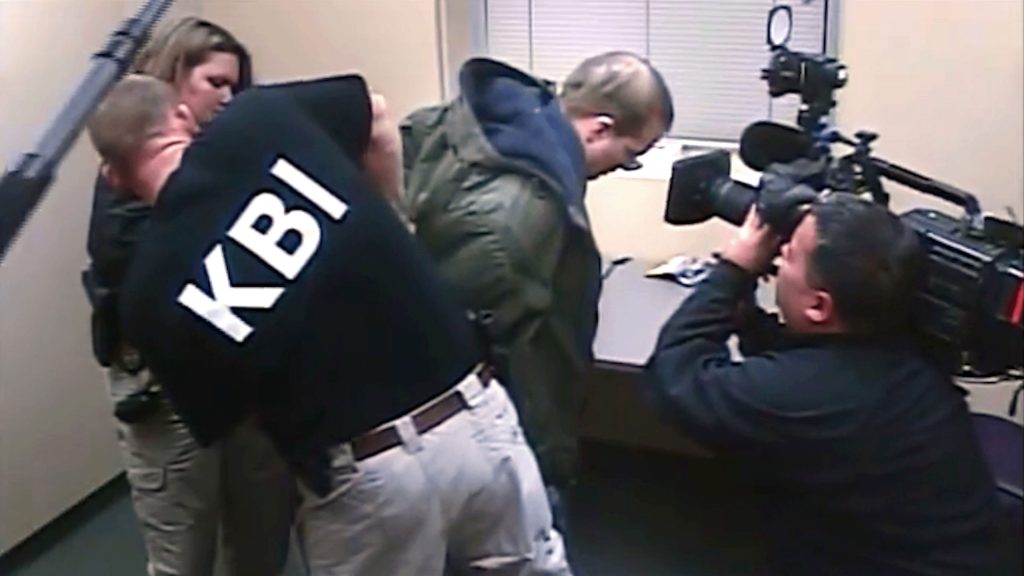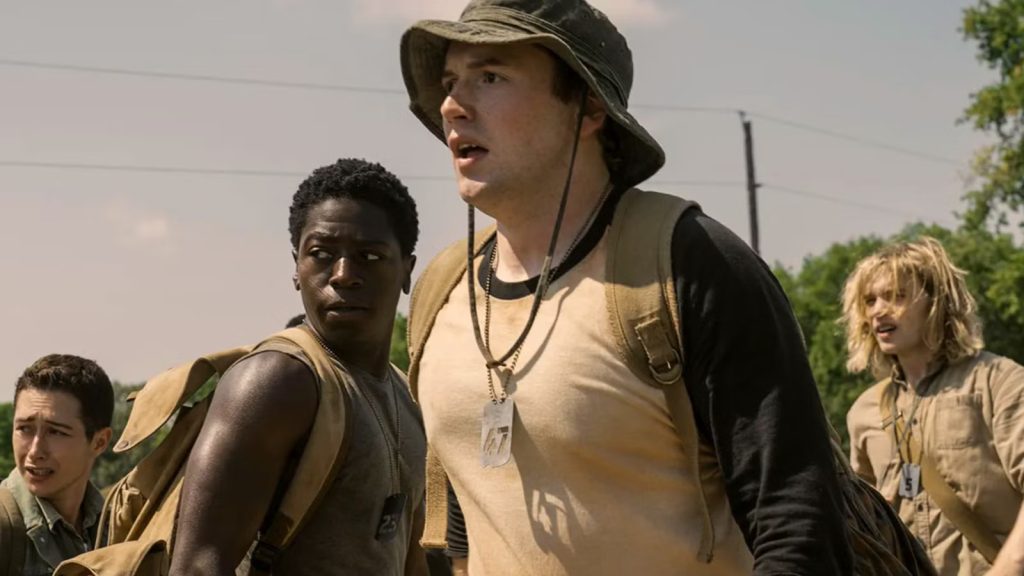Early in William Oldroyd’s Eileen, the title character (Thomasin McKenzie) is taking out the trash at the boys’ prison where she works. As she approaches the big dumpster, the bag she’s carrying breaks and dumps all over her, and maybe there’s a more subtle metaphor for her life at that moment, but there’s not a more apt one. She’s 24 years old, in Massachusetts in the early 1960s, stuck in a seemingly inescapable rut; she dropped out of college when her mother got sick, but after she died, Eileen was stuck taking care of her bottle-swilling, pistol-swinging, former police chief father (Shea Wingham, at his most reprehensible). She does filing and other odd jobs at the prison, and occasionally she has bleak, passionless sexual fantasies about one of the guards. And that’s about all she’s got going on. “Get a life, Eileen!” barks her father. “Get a clue!” Oldroyd’s film, adapted from Ottessa Moshfegh’s novel, is about how she does just that.
Things start to change when she meets the splendidly named “Dr. Ms. Rebecca St. John,” played by Anne Hathaway in straight-up blonde bombshell mode, sporting Marilyn hair, and smoking cigarettes the way bad women used to smoke them in movies. “It’s a nasty habit,” she purrs later. “That’s why I like it.” Dr. Ms. Rebecca St. John is the new prison psychologist, straight outta Harvard with some wild ideas about why these boys act the way they do; Eileen is immediately taken with her, and understandably so. Rebecca has the look and style of the classic femme fatale, but it’s more complicated than that, since she’s an educated woman in a respectable job. So she can’t be up to something. Can she?
One of the finest qualities of this screenplay, which Moshfegh adapted with Luke Goebel, is how it both indulges in the tropes of film noir, and shakes them up. The cat-and-mouse between Rebecca and Eileen is one of the most venerable—the femme fatale and the poor sap who becomes her mark—but we’re not entirely sure that’s what’s happening, since we’re also witnessing a same-sex attraction in a period in which those sorts of things weren’t customarily out in the open, and certainly not in the movies. You see that hesitation and confusion in the panic that overcomes Eileen when Rebecca invites her out for a drink after work, and the excitement in her eyes when a guy at the bar gets too belligerent about cutting in on the dance floor, and Rachel elbows him right in the face. Then the song changes, and they’re slow-dancing, and Eileen’s head is on Rachel’s shoulder, and we can be certain of one thing: in some sense or another, Eileen is in trouble.

“You’re in a good mood,” her father notes. “what’s wrong with you?” She can’t tell him, of course, so he continues to say oblivious things like, “Love will make you crazy, Eileen. You’ll probably never understand that.” His callousness renders her a sympathetic protagonist, even as we see, with unnervingly convincing staging, her daydreams of killing her father, or herself. You root for her anyway; her attraction is so intense, her excitement so infectious. Oldroyd (who also directed “Lady Macbeth”) lingers on the details of their interactions—a touch, a glance, a pause—just as Eileen does, stages their scenes together in two-person compositions that could be covers for a pulp paperback, and when their exchanges get loaded (“You really think you’re a normal person?” “Normal, how?”), he just lets that feeling, that tension, that heat hang in the air.
And then… well. AND THEN. Moshfegh and Goebel’s screenplay pulls one of the most spectacular 180s I’ve ever seen in a motion picture, just a first-rate bait-and-switch, and in the hands of a lesser filmmaker, and a less accomplished cast, it could’ve absolutely gone to shambles. But that’s not what happens here at all; Eileen pulls off the transition from teasing fatalism to something much doomier, and does it with panache. This singular accomplishment is best ascribed to how carefully and attentively the characters have been established until then, and that detail comes back around by the end, when it’s do or die. Hathaway is spectacular, and she’s in a role that feels built for the express purpose of showing what she can do, right at this moment (a midpoint, if that) of her career.
But the revelation here is McKenzie, whose performances can hit and miss, but has a moment of acting near the end that is absolutely astonishing, and breathtakingly simple: she’s sitting in a window, feeling one way, and slowly realizing what’s actually happening. Oldroyd takes out all the sound, the marvelous Richard Reed Parry score and the crackling dialogue, and in my screening, you could have heard a pin drop. It’s what great screen acting is all about.
A
“Eileen” is in theaters Friday.



